Catalog — Margaret Evangeline: Holey Space
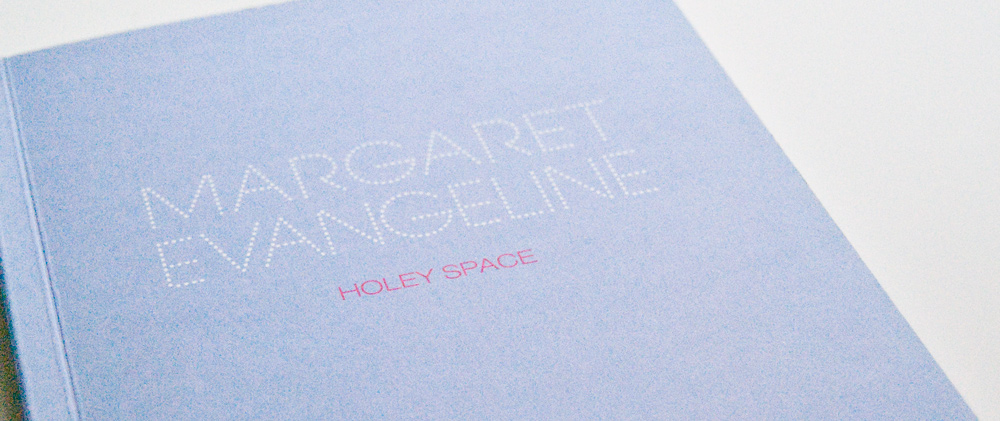
Essay 'Uneasy Waters' By Edward Lucie Smith, 2010
I. A paradigmatic shift has taken place, during the past hundred years or so, in the whole process of artistic creation. When we look back at the art of ancient civilizations, we think in terms of single exemplary objects – the bust of Nefertiti in Berlin, for instance, or the Victory of Samothrace in Paris. Some names of artists have come down to us – those of the Greek sculptors Phiadias and Praxiteles, for example, and we even think we can identify, thanks to the clues offered by various ancient authors, certain works that are originals, and a number of others that seem to be reasonably accurate copies. Yet, while we may believe we recognize an artistic personality, we have no clues to the psychological processes that led to the creation of these sculptures. Where there is a narrative to be discerned in ancient art it is one about politics annd still more so about the social and religious ideas that energized a particular society, For movements of the individual psyche there is almost no place.
One only has to look at Margaret Evangeline’s work, as presented in this book, to see how radically the situation has changed. The title itself gives more than a clue. The narrative is one about a continuous process of personal development and change. Oddly enough, although we don’t find much if any trace of this in Greek art, we do find its beginnings in early Greek philosophy. In his dialogue Cratylus, written circa 360 b.c., Plato remarks of one of his most important predecessors, who flourished more than a century earlier: "Heraclitus, I believe, says that all things go and nothing stays, and comparing existence to the flow of a river, he says you could not step twice into the same river." One of the interesting things about this citation is that Plato garbles Heraclitus’s view. What the latter in fact said was that people who step into a river step into waters that are different each time they do so, but that the river itself nevertheless remains the same. Heraclitus’s cosmology entails a belief in the universe as a self-renewing continuity: “This world-order, the same of all, no god nor man did create, but it ever was and is and will be: ever-living fire, kindling in measures and being quenched in measures.” One easily perceive the relevance of these formulations to the sequence of images reproduced here.

In order to understand what is taking place in certain areas of contemporary art – one of them being the area to which Margaret Evangeline’s activity as an artist belongs, one has to look at both Heraclitus and Plato, and beyond that, at the way in which some of Plato’s ideas have been interpreted and modified in the Modernist epoch.
Perhaps the most important of these ideas where visual art is concerned is Plato’s theory of archetypes. He postulated that all objects possess an‘ideal’ form or structure. Yet these Forms were too pure, too mathematically perfect, to exist in quotidian reality. They existed only in the realm of knowledge, Works of art, being material objects, aspired to a perfection they could never achieve. Essentially this is the basis of all subsequent theories of classicism.

In the early 20th century, Karl Jung (1875-1961), one of the two major pioneers of modern psychoanalysis, took Plato’s concepts further, and presented a new theory of Archetypes. For him, an Archetype – the equivalent of one of Plato’s Forms - was “an unconscious idea, pattern of thought, image, etc., inherited from the ancestors of the race and universally present in individual psyches.”
As can be seen from Margaret Evangeline’s interview with the critic Dominique Nahas, printed in this book, a version of this is important to her own conception of creativity. For example, at one point she has the following to say about her own genetic heritage: “My own first ancestor arrived in the new world from France, living in Montreal as an arquebusier. He began as a 20 year old arms- maker to Charles LeMoyne around 1658. After a life as a guide and trader he drowned in Marie St. Sault on December 6, (my birthday), unknowingly leaving me a legacy 300 years later of water, earth, steel and marksmanship.”
It will be noted, however, that she makes no claim that is heritage is universally valid. On the contrary, she sees it as something personal to herself. That is, she knows where she is rooted, but sees her creative circumstances as being, in astrological terms, the product of a unique planetary conjunction.
II. The above leads me to ask certain questions, which I think are, despite what I have just said, relevant to the situation of many artists – not just one – in the opening years of the 21st century.
During the past half millennium we have witnessed a slow but inexorable progession from an emphasis on art objects, to an emphasis on the personalities responsible for producing art. This shift is chiefly associated with the rise of the Romantic Movement, but its first stirrings were felt much earlier. If we look at the two lives of Michelangelo written in the artist’s lifetime – one by Giorgio Vasari and the other by Ascanio Condivi – we notice that they are concerned to present their subject not only as an artist superior to all his contemporaries and predecessors, but as a new and superior breed of human being. We get a glimpse of the same attitude in one of Shakespeare’s best-known sonnets, which apparently alludes to his rivalry with the then better-known Christopher Marlowe:
Was it the proud full sail of his great verse,
Bound for the prize of all-too-precious you,
That did my ripe thoughts in my brain inhearse,
Making their tomb the womb wherein they grew?
Was it his spirit, by spirits taught to write
Above a mortal pitch, that struck me dead?
[Sonnet 86]
It is the last two lines that are particularly significant in the present context
The process has gathered pace since the rise of the Modern Movement, then that of its offshoot, Post Modernism, We have now reached a stage where artistic personality is on occasion so thoroughly triumphant over physical evidence that the role of the artist, as traditionally understood, is subsumed into another role altogether, that of the magical being or shaman – an individual who makes magic simply by existing. A case in point was Joseph Beuys, possibly the most significant, and almost certainly the most influential artist of the second half of the 20th century. Now that Beuys is dead, retrospectives devoted to his career have become curiously frustrating occasions – more like displays of relics in a sacred setting than like anything associated with normal exhibition practice in a museum. What is shown depends on memory and faith, not on visual effect.
Margaret Evangeline’s work is not carried to this extreme, nor does she have any ambition to push things so far. Yet, looking at the entirety of her production, one is soon aware that the best metaphor for describing what she does is to say that it resembles a continuously flowing river or stream.. As with Heraclitus’s conception of the world order considered as a whole, you step into it at different times and duly, on each occasion, find that the water is different – not what you stepped into before. At the same time, however, you are aware that what you are looking at is connected with everything else of hers that you have examined previously, or are likely to look at in the future.

This, of course, is one reason for the title given to the book.. Another obvious reason appears clearly in her interview with Nahas – the fact that she is fascinated by water in the most literal sense. Much of her biography – where she has chosen to live and work, for example - is linked to that.
III. What this leaves unexplained is the relevance of the adjective ‘uneasy’. This is apposite in a number of ways. It suggests, first, the unpredictable shifts of psychological balance that trigger the desire to make art. If the idea of ‘waters’ suggests both the steady flow of creative invention that has typified Margaret Evangeline’s career, and also signposts one of the dominant images in her work, then the descriptive word attached to the noun points to the element of risk and pain that may also be involved. Some of Evangeline’s works are in fact notable for the amount of aggression that they seem to express. This is especially true of the works made by shooting at metal panels. In the interview already cited, she describes how this was done:
“I lined up polished aluminum rectangles against some scrubby vegetation looking for a way to capture the moment. Then I borrowed rifles and shotguns and a machine gun—a Reising M50, to shoot into the metal/light. The machine gun was from my son Michael’s commanding officer who was based in Albuquerque. He was a West Point graduate and got into collecting the Reisings. They were the main weapon used by Marines in the Asia Pacific Theater, and the guns had a glitch causing them to hang fire so many were thrown into the lagoons. Anyway, later I found a small canyon outside of Los Lunas and worked out a series, feeling the rain, mud, wind. Unbelievably, there was a rainbow and a train passing overhead. I documented the process with photographs. There's a shrine nearby where penitentes visited.”
For a European critic like myself, this description is fascinating for more than one reason. It aligns an avant-garde artist and an avant-garde way of making art with America’s gun culture, which to Europeans tends to be one of the stranger and more alienating aspects of American life, something on a par with and often closely linked to American fundamentalist Christianity. Evangeline sees this use of guns to make art as part of a bonding process – an aspect that almost certainly wouldn’t occur to a non-American: “It was all indigenous, right down to borrowing the rifle from a farmer. Later when my weapon jammed, an intern in the park went home to get his own .32 caliber lever-action rifle to loan me while he fixed mine. He was 15 years old I think.” And at the same time she describes these works as metaphors for the violation of the original American Arcadia.
At the same time, they are among the works that link what Evangeline does most closely to aspects of the Late Modernist mainstream. A comparison can be made to the Spatial Concepts of the Italian artist Lucio Fontana – though the majority of Fontana’s canvases are slashed, he also made some examples in the series by shooting at them. Another Italian from the Arte Povera group, Michelangelo Pistoletto, makes extensive use of mirrored surfaces that integrate the spectator with the work, and at the same time link two different kinds of representation – the permanent, which is the one the artist provides, and the ephemeral, which is what is reflected in the mirror.

Inevitably, when these panels by Evangeline are displayed, the spectator finds himself or herself included – the two spaces, that within the art work and that outside it, become indivisible. At the same time, these panels make a much more inherently romantic effect than works by either Fontana or Pistoletto. The holes and indented circles made by the bullets bear an uncanny resemblance to the effect made by raindrops when striking an expanse of calm water – for example, the surface of a pond on a relatively windless day. The fact that the surface distorts a little when the bullets strike it reinforces this effect.
We have of course been taught to read them in this way not by Romantic painters but by 20th century scientific photography. This is not unlike the way that Muybridge’s photographic experiments taught people, though slightly earlier, to read the action of a galloping horse in an entirely new way. Yet these innovations in seeing have been absorbed into the common visual vocabulary with remarkable rapidity, and the tendency now is undoubtedly to see these panels not simply as reflective surfaces treated in a particular fashion but as echoes of our own feelings about nature.
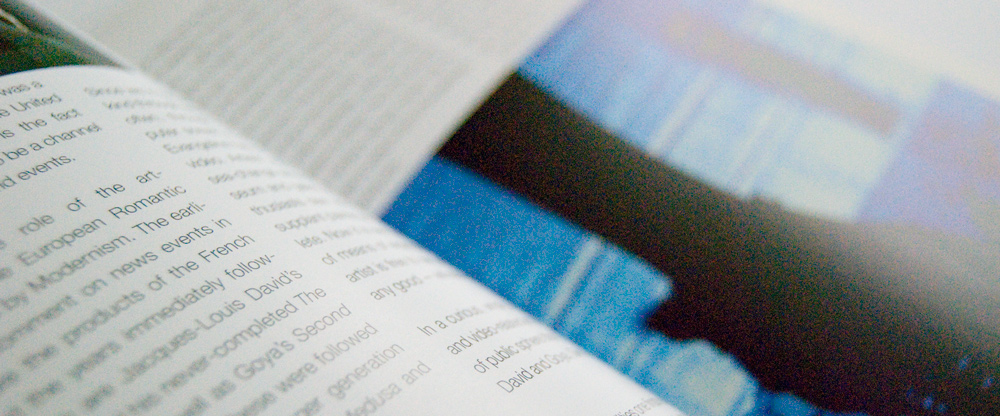
IV. The cultures that Margaret Evangeline comes from are fascinatingly mixed. Her background is Louisiana, but her first ancestor in the New World traveled to Montreal in Canada from France. That is she is a descendant of the Acadians, who were exiled when the British conquered Canada. She still feels herself to be rooted in Louisiana, but also has close ties to New Mexico, where one of her sons now lives, and to New York, where she herself has an apartment, and also a studio. These three locations are very different from one another. Louisiana and New Mexico have strong claims to be the most ‘foreign’ – in the sense of ‘non-American’ - regions of the United States. Both present the world with cultures that are proudly distinct. In Louisiana the culture is a mixture of colonial French and African. In New Mexico the mixture is Native American, Old Hispanic and New Hispanic. New York is, of course, the most cosmopolitan city in the world, the chief gateway through which generations of immigrants reached their often delusive Promised Land. Margaret Evangeline understands that these apparently diverse territories are subtly linked. Each, for example, is dependent for part of its character on a river. In Louisiana there is the Mississippi, the blessing and curse of the city of New Orleans. Iin New Mexico there is the Rio Grande, which struggles to bring water to land that is otherwise desert, and which, once it enters Texas, forms part of the border between Mexico and the United States. And in New York there is the “mighty Hudson”, whose lower reaches are overlooked by the windows of Margaret Evangeline’s studio. In fact this lower part of the Hudson is technically a “drowned” river, since it discharges into the sea through a tidal estuary. The original Native American name of the river, Muh-he-kun-ne-tuk, meant “the river that flows both ways.”
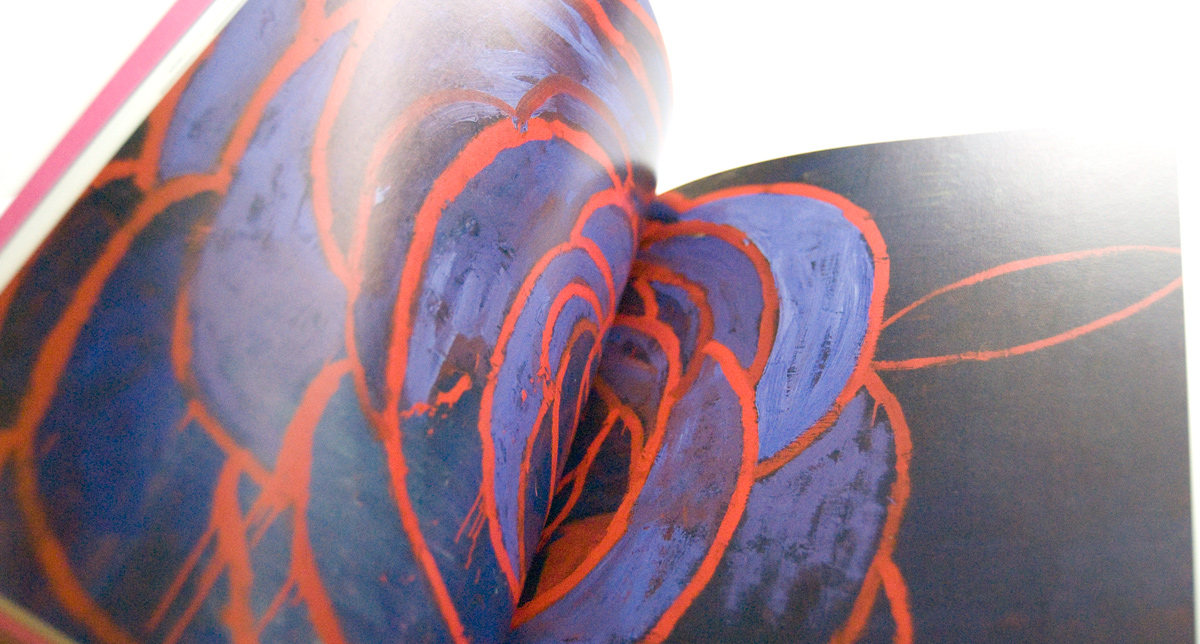
Looking at the wandering, flowing, rippling lines of many of Evangeline’s recent abstract paintings it is easy to imagine that they are directly inspired by the image of flowing water.
In effect, this is too simple. Her work is as much related to ideas of obstruction and pollution as it is to any metaphor for a free-flowing relationship with the natural universe. Speaking of New Orleans, a city that has nurtured her art, she cites two very different personalities as relevant to her reactions to the Crescent City – Oscar Wilde, with his love of the surface: “The mystery of the world is in the visible not the invisible” and St Joan of Arc, whose golden equestrian statue by Emmanuel Frémiet (a copy of the 1880 original in the Places des Pyramides in Paris) was presented to the city by General de Gaulle, when he made a state visit in 1958. What draws her to Joan is the fact that she was the prisoner of an obsession – a state of mind she links to the desire to make art, whatever the circumstances. One might add, perhaps that Joan can be seen as a Christian re-incarnation of the virgin goddess, Diana the Huntress, whose emblem is the crescent moon.
Yet it is also clear that this state of mind is linked to world events. Three of her major paintings, made in New Orleans at the time of the First Gulf War, refer the political events of that time. One has the significant title Awake in the Nightmare of History. The reference in the paintings is partly prompted by the fact that her son Michael was a serving officer in the armed forces of the United States. Another element, however, is the fact that, as an artist, she feels herself to be a channel for the sweeping currents of world events.
This conception of the role of the artist is a creation of the European Romantic Movement, modified by Modernism. The earliest paintings to comment on news events in this fashion were the products of the French Revolution and the years immediately following. Among them are Jacques-Louis David’s Marat Assassiné, and his never-completed The Tennis Court Oath, also Goya’s Second of May and Third of May. These were followed by paintings made by a younger generation of artists: Géricault’s Raft of the ‘Medusa’ and Delacroix’s Massacre at Chios.
What Modernism did was to encourage artists to internalize the feelings produced by such events, and to represent the emotion, the state of mind, rather than the event itself. In this sense some of Evangeline’s paintings can be seen as politicized versions of Abstract Expressionism. The difference, perhaps, is that the emotions portrayed in the classic Abstract Expressionist canvases of the 1940s and 1950s tended to be entirely personal – the most striking exceptions being Arshile Gorky’s coded versions of his childhood experience as a victim of the Armenian genocide. At the time when they were painted, however, the true meaning of paintings such as Garden in Sochi was lost even to that part of the art audience that most admired Gorky’s work.
Since we in fact now learn about events of this kind through television, and now, more and more often, through moving images on the computer screen, it is not surprising that Margaret Evangeline has in the last ten years moved into video. Artists’ video has undergone a strange sea-change since it first appeared on the museum and gallery scene. At its beginnings, enthusiasts saw video as a medium that would supplant painting altogether and render it obsolete. Now it is seen as just one of a wide variety of means of expression that the contemporary artist is free to use, all of which – if the artist is any good – will relate to a central creative core.
In a curious, wholly unexpected fashion, video and video-related art has returned art to the kind of public sphere that it occupied in the epoch of David and Goya, Géricault and Delacroix.
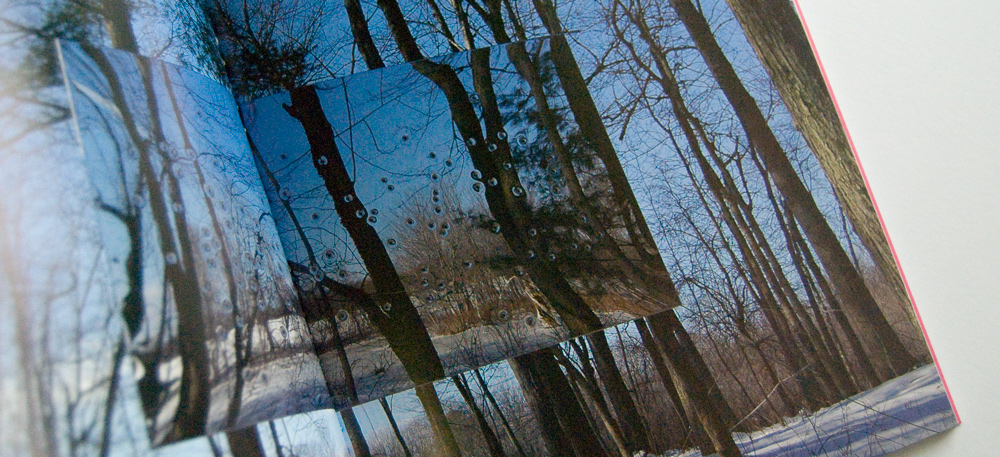
V. The qualities one finds now in Evangeline’s work seem at first sight to be in opposition to one another. Let me enumerate what I think they are. In the first place, she has no problems about regarding herself a ‘local’ artist. The locality can in fact be tiny – the subject of some recent paintings is the miniscule garden attached to her ground floor West Village apartment in New York. A sense of place is very much part of her work, and if you miss out on that you miss a great deal of its meaning. This tends to conflict with the feeling, particularly deeply embedded in the history of classic American abstraction, that the aim of the abstract artist is to be universal, in the sense that he or she begins from personal emotion, but then presents them in a form that is so commanding that it is accessible to everyone. The paradox of Modernist abstraction is that it has attracted a regiment of interpreters while essentially making the claim that interpretation is otiose. This is the real point about Mark Rothko’s famous remark that he wanted people to weep in front of his paintings, without knowing why.
I suspect that Margaret Evangeline may, like many artists, be suspicious of critics who try to poke their fingers into what seem to her to be private places – but she doesn’t want to give up the sense of place itself. The theme recurs constantly in any conversation one may have with her about her work. In New Mexico, what she likes is the sense of the rural. She is not so much interested in the elite culture of Santa Fe. Her unselfconscious embrace of America’s gun culture is one of the things that non-Americans, such as myself, find it hard to swallow. Yet it is also clear that she feels that the culture of the gun is intimately part of her history, part, in the most literal sense possible, or her bloodline – her first ancestor in the New World was an ‘arquebusier’, a man with a gun.
Another paradox is her relationship with industrial materials. She uses these in a raw, spontaneous way that seems contrary to their essential nature. Her use of stainless steel is perhaps less surprising than her use of foam-board, which she punctures, not with gunshots, but with a pair of high heels. Yet this is a reminder that we live at a time, and in an environment where these seem just as much a matter of everyday fact as raw wood and hand-forged iron would have seemed to our ancestors.
A third subject – perhaps the most contentious of them all, is her relationship to feminism. One might say that, despite the vast strides that have recently been made in the world of contemporary art towards some degree of gender-equality, any successful woman artist knows herself to be a feminist. The role chooses her, not she the role. Her gender empowers her and at the same time limits her. The limitation is that her gender is still part of the equation – something to be asserted, acknowledged, or at the very least, discussed.
I think I cannot be entirely alone in finding something insidiously gleeful about some of Margaret Evangeline’s choice of tools for making art – a gun, and, yes, a pair of ultra-fashionable high-heeled boots. These are the accoutrements of the stereotypical dominatrix, of the eye-candy in a Bond film, but here imbued with a kind of playfulness, accompanied by an equally surprising lack of self-consciousness. It is tempting to try and rescue a category – post-feminist – for work with this particular set of characteristics. ‘Post-feminism’, so I’m told, is a term usually applied to women artists who are willing to turn themselves into sex-objects – wearers of Victoria’s Secret underwear and the highest possible heels – if this will get them a place in a good commercial gallery. Yet surely there should be a word or phrase that defines the female artist who has been through the feminist experience and is now so sure both of the value of her gender and the value of her talent that she will never again need to wear a t-shirt with the slogan ‘I’m here – deal with it!’. There is an insouciant self-confidence about Margaret Evangeline’s work that is both amusing and attractive.
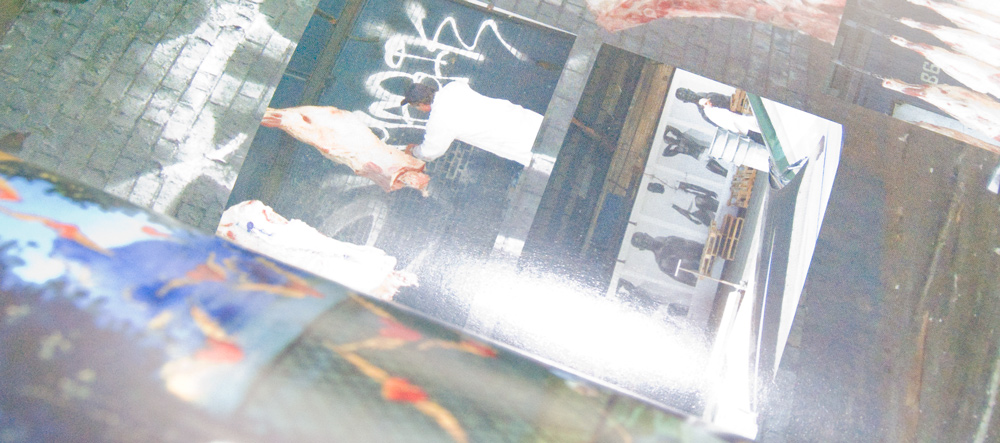
These apparently contradictory characteristics open the door to an unexpectedly wide-ranging discussion about art and its purposes during these, the opening years of the second millennium. If the technical resources for art now seem to be in a continual state of expansion, the same cannot truthfully be said of the stylistic situation. Artistic styles hav become a set of readymade templates, which artists combine and recombine at will. Margaret Evangeline seems to accept this as something inescapable, therefore not worth worrying about.
Her work is essentially a continuous flow of associations and ideas. It combines great matters and small ones – the Gulf War, Hurricane Katrina, her garden in the West Village, a boy who lends her a gun in New Mexico, some fashionable footwear, the personality of her cat – and combines them without imposing a hierarchy. Each of these – we should call them events rather than static objects, even where actual objects are involved – resonates with some of the others, and the product is something that can be defined, in the terms set by the kind of society we live in, as art.
The essential character of this art is contained in our inability, which is also the artist’s own inability – to define it. There are no rules. There is no place where art stops. The problems here are twofold: pretentiousness and rhetoric, which are often so closely allied as to be indistinguishable from one another. Yet we know we need art to tell us things that we couldn’t otherwise discover.
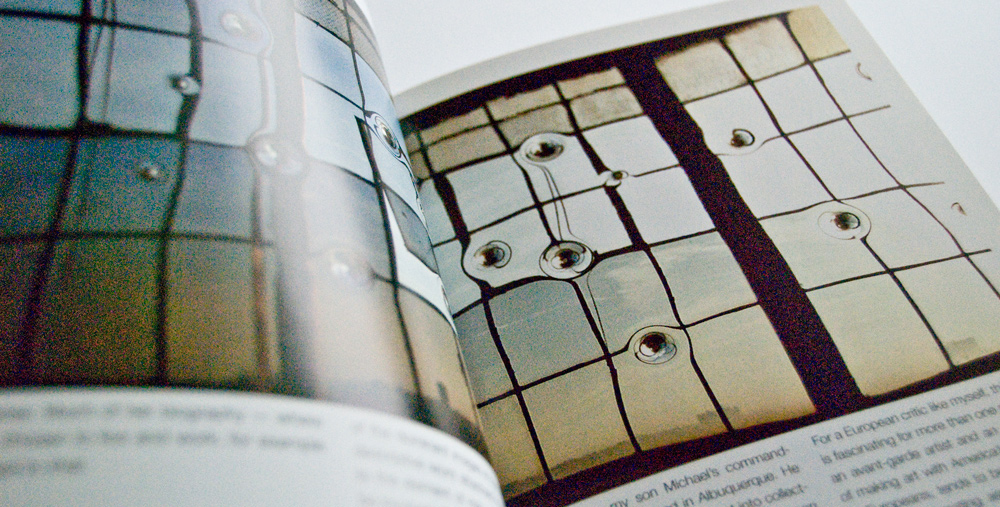
There is a well-worn anecdote about the relationship between the Russian impresario Serge Diaghilev and the writer Jean Cocteau. When Diaghilev’s Ballets Russes were at the height of their first success, as the focus of avant-garde innovation, the young Cocteau was desperate to be part of the team, and kept pestering Diaghilev about it. “Serge, what do I have to do? What do I have to do?” Eventually the exasperated Diaghilev rounded on him: “Jean, surprise me!” The phrase is more forceful in French: “Etonne-moi!”
I don’t think Margaret Evangeline tries to force surprise, as so many ambitious contemporary artists now try to do. Instead she likes surprises that sneak up on one – that astonish the creator or initiator pretty well as much as they surprise the audience. The audience thinks: “How did she ring that bell?” The artist thinks; “What made me do it? How did I get there?” That is why much of the work illustrated in this book can be described as uneasy. It raises questions, but often asks us to supply the answers. The artist is as interested as we are to see where the flow of the work will take us.